THE REAL 2020 MXA 250 FOUR-STROKE SHOOTOUT

2020 MXA 250 SHOOTOUT: KX250 VS. CRF250 VS. RM-Z250 VS. YZ250F VS. FC250 VS. 250SXF
The average MXA wrecking crew test rider is not as fast as people like to think. Yes, we do have three former AMA National Pros on the masthead, but it’s wrong to think that Pro riders are the only test riders we have. We use fast, flashy Pro riders to push our test bikes to their outer limits. Why? You don’t know where the flaws are until you get to the edge; however, we don’t depend solely on Pros for our test feedback. Far from it.
We have a village of test riders of all shapes, sizes, nationalities, skill levels, personal preferences and income levels. Our objective is to get input from every MXA test rider and then compile and filter the data to come up with the most unbiased, calculated perspective possible. Thus, we take the opinions of each of our test riders with a grain of salt. Why? Most opinions are skewed one way or another. Some favor the color green (referring to Kawasaki green—not the color of money). Others bleed blue. Some test riders have odd setups but are great engine testers. Others favor power that rips the bars out of mere mortals’ hands but have a handle on finding a perfectly balanced setup.
Our job is to take all of the opinions and distill them down to facts that are usable, not just for Pros but for riders of all skill levels. When push comes to shove in settling an argument about how one bike works compared to another, MXA is lucky to have the most knowledgeable and sensitized test rider in the sport on our staff. Jody Weisel has ridden every production dirt bike made in the last 43 years. He has the largest base of bike knowledge of any test rider who has ever walked the face of the earth—and he is also our oldest test rider—and thus our slowest. He is the voice of reason.

You might be surprised to learn that the favorite bikes of the MXA test riders aren’t always the winners of the shootout. Yes, they did pick one as the best bike, but it is not necessarily the one they would choose to race. Daryl Ecklund has been known as a Kawi guy since he started at MXA. Josh Mosiman raced Husqvarnas for his entire professional career. Dennis Stapleton loves the powerful yet unstable Hondas. Yet, the last time Husky, Honda or Kawasaki won a shootout was back in 2014. In short, these MXA test riders can recognize greatness in a bike, even if they choose to race something else. That’s as unbiased as a test rider can be.
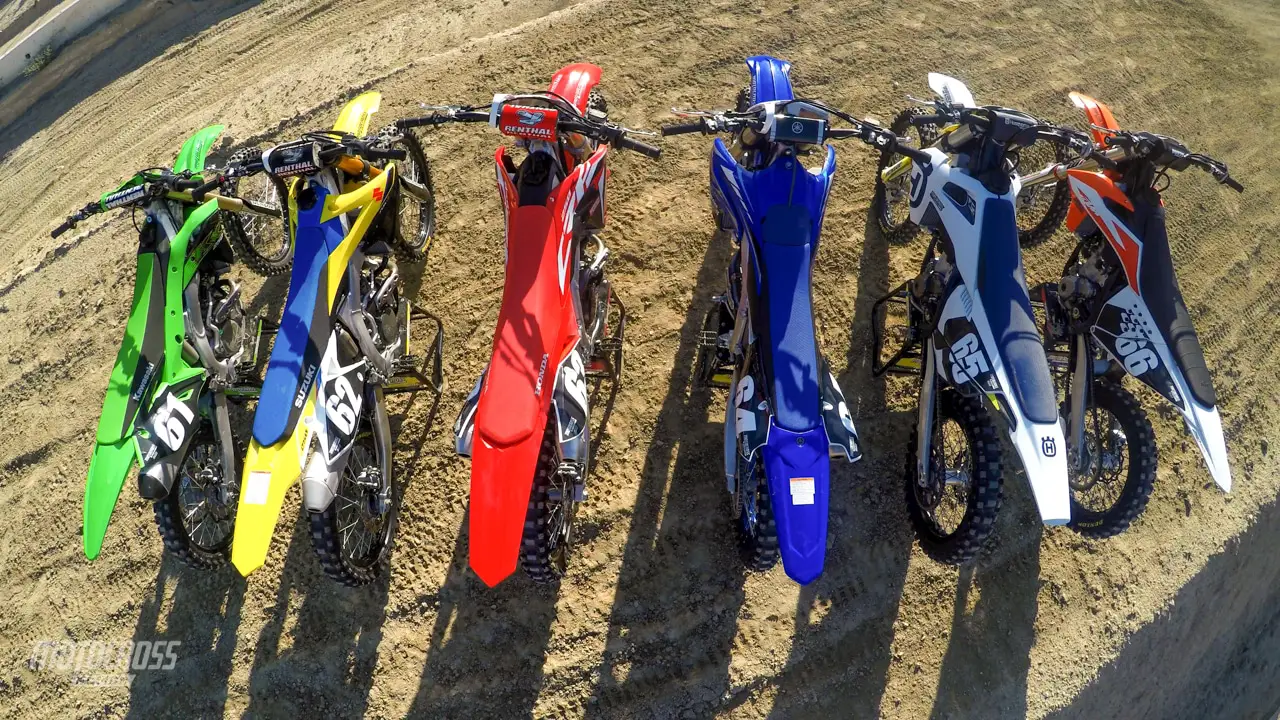
This brings us to the MXA wrecking crew’s perspective on the 2020 250cc four-strokes. Each bike has a unique personality. All have their strengths and weaknesses. You might think that MXA’s primary objective is to name the winner of the 2020 MXA 250 Shootout and call it a day. Not true. Our real goal is give you the information you need to form your own opinion as to what bike is best for you—just like the MXA test riders do. Pay more attention to the information than the actual ranking of each individual bike. The bike that won the “2020 MXA 250 Four-Stroke Shootout” may not be the bike for you.
SIXTH PLACE: SUZUKI RM-Z250
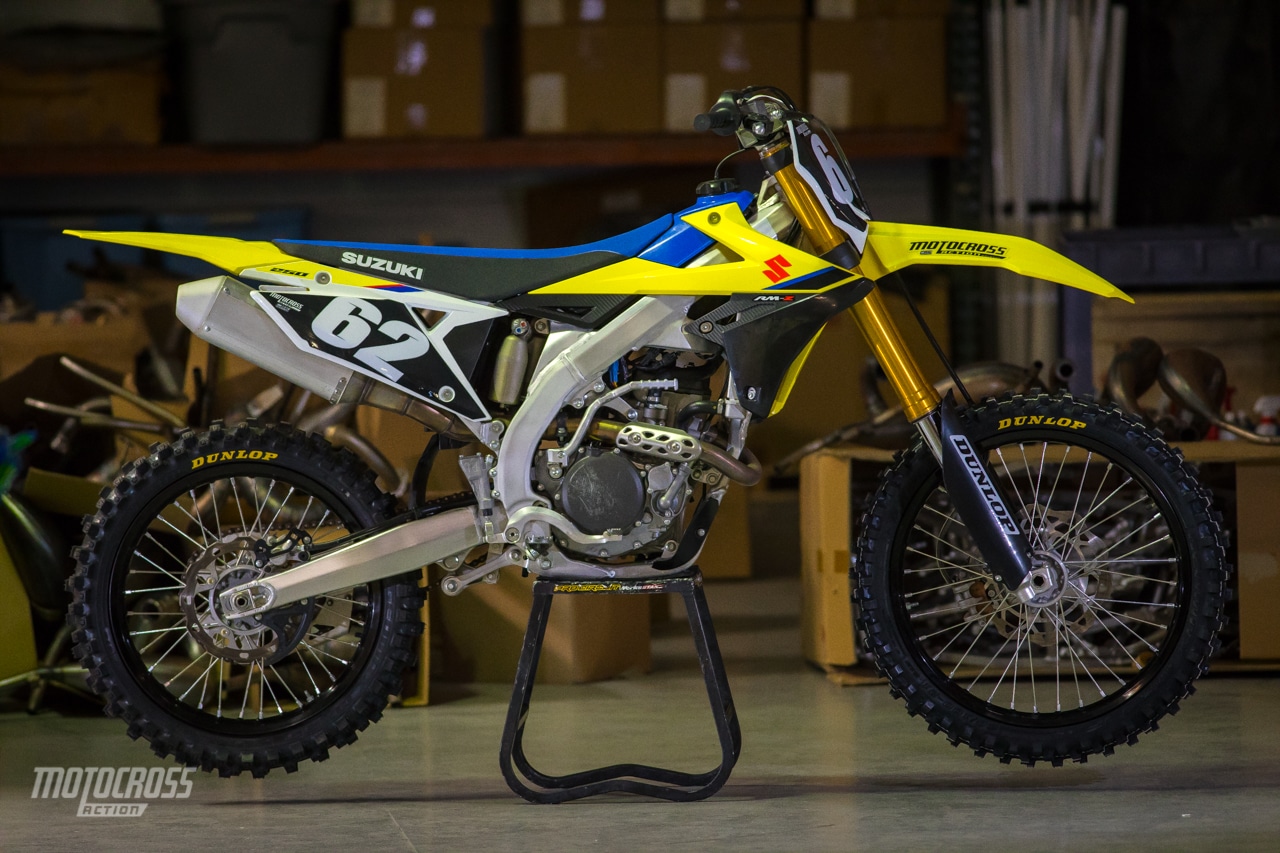
HORSEPOWER: 39.50 @ 11,700 rpm
TORQUE: 19.43 pound-feet
WEIGHT: 226 pounds
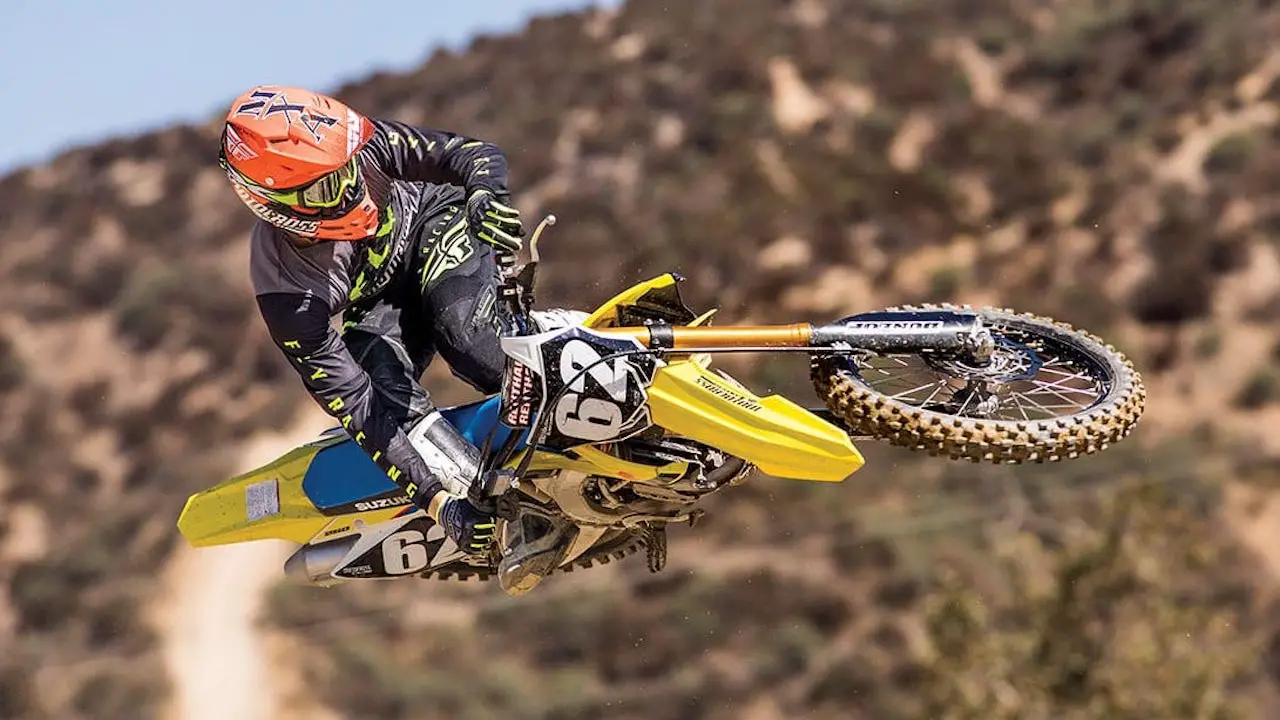
Over the last decade, Suzuki has been in catch-up mode. For 2020, the RM-Z250 was the victim of benign neglect by the Hammamatsu-based engineers, but back in 2019 Suzuki made updates to the RM-Z250 that mattered, most notably bringing the power output into line with the competition. But, as soon as the field of 2020 bikes rolled down the assembly lines, the RM-Z250 didn’t have the legs to run with the pack. The 2020 KX250, CRF250, 250SXF and FC250 all put in hard work during the off-season, while the RM-Z250 sat on the couch. The 2020 Suzuki RM-Z250 is the slowest and fifth-heaviest 250 on the market. If you are looking for a purebred race bike, the RM-Z250 will probably not make your short list; however, if you are a weekend warrior, play rider or lower-level racer, the RM-Z250’s premium low-to-mid power may just be right up your alley. Most riders can live with everything about this bike if they aren’t serious about winning races; however, no serious racer can live with the atrociously stiff forks and 39-horsepower engine.
The RM-Z250 doesn’t feel as heavy as it really is (226 pounds) as long as you keep two wheels on the ground. The RM-Z250 offers superb cornering prowess. It turns inside every 250 four-stroke in its class. This distinguishing characteristic comes at a price. The RM-Z250 is a turn-at-all-costs chassis, but it is not well balanced. At speed, it loses its stability and starts to shake.

We wish we had more positive things to say about the 2020 Suzuki RM-Z250, because we enjoy riding this bike; but, we dread lining up on it against the green, blue, orange, white and red 250 four-strokes. This is the RM-Z250’s fifth consecutive year finishing last place in “MXA’s 250 Four-Stroke Shootout.” If Suzuki wants to knock the RM-Z250 out of its five-year funk, the bike needs forks that work, electric starting (without packing on any more pounds) and a powerplant that bridges the 4-horsepower disadvantage it has against its five competitors. If the RM-Z250 doesn’t make significant improvements over the next few years, future 250 four-stroke shootouts will still have Suzuki in sixth place.
MXA’S 2020 SUZUKI RM-Z250 FULL TEST
FIFTH PLACE: KAWASAKI KX250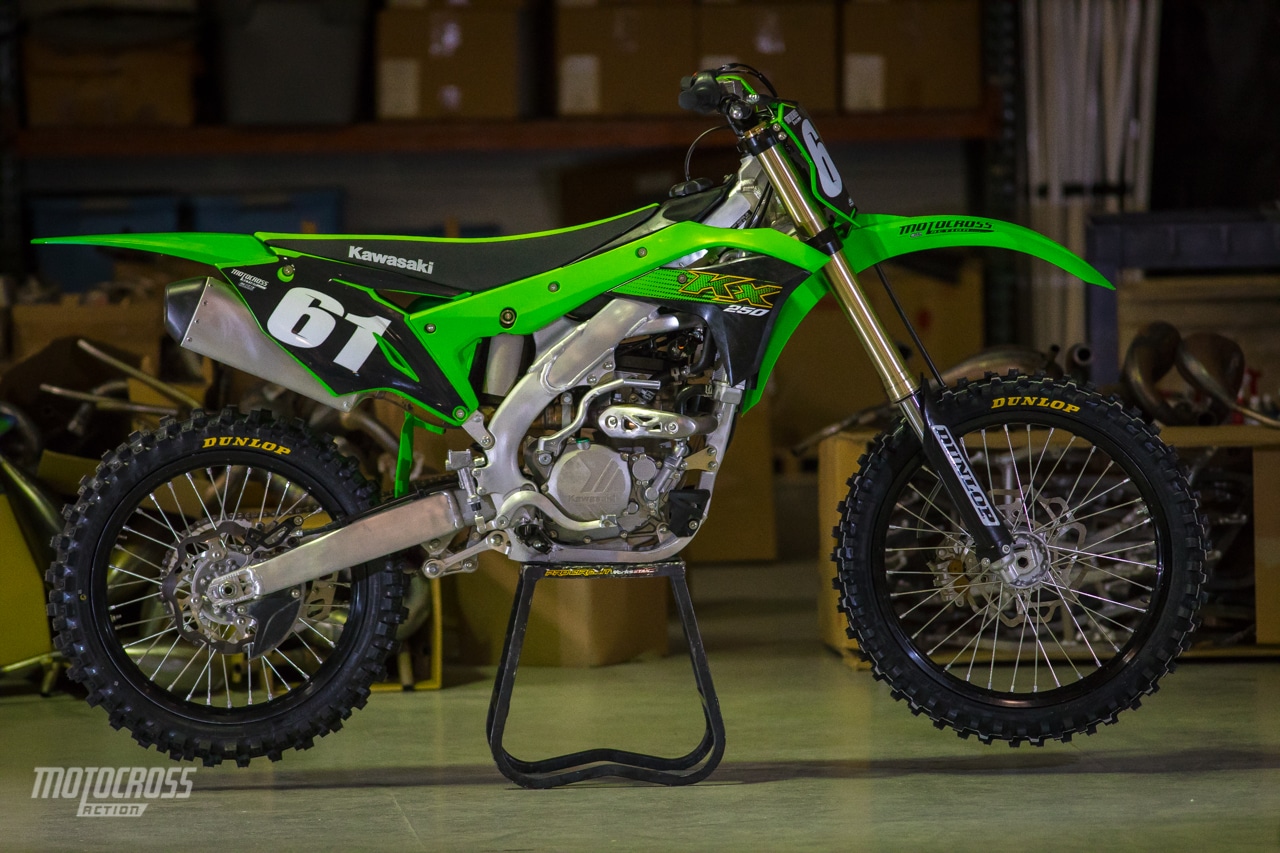
PEAK HORSEPOWER: 43.26 @ 12,800 rpm
PEAK TORQUE: 20.13 pound-feet
WEIGHT: 221 pounds
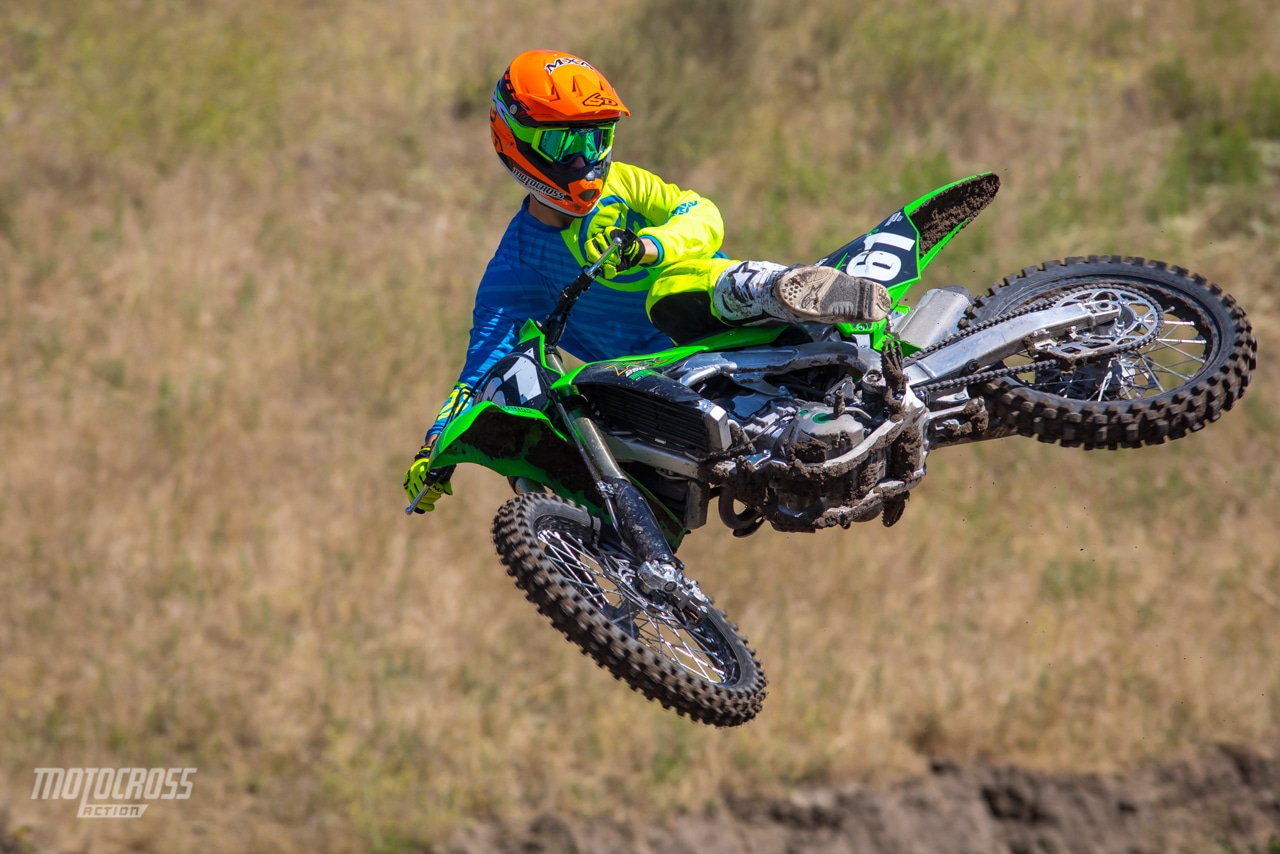
The KX250 has serious lungs for 2020. The KX250 engine offers the most peak horsepower of any 250 four-stroke for 2020. Quite the turnaround—as the KX250 had the least peak ponies in 2019; however, Kawasaki traded its good low-to-mid power for high-rpm peak power. Honda did the exact same thing back in 2018. Honda gave away usable low-end power for high-rpm shriek—and we all know how that played out. Honda has been digging itself out of that hole ever since; however, Kawasaki and Honda had no choice if they wanted to play in the same league as the rev-monsters from KTM and Husqvarna. Their solution? Copy the KTM’s bore-and-stroke, finger-follower valve train and 14,000 rev limiter.
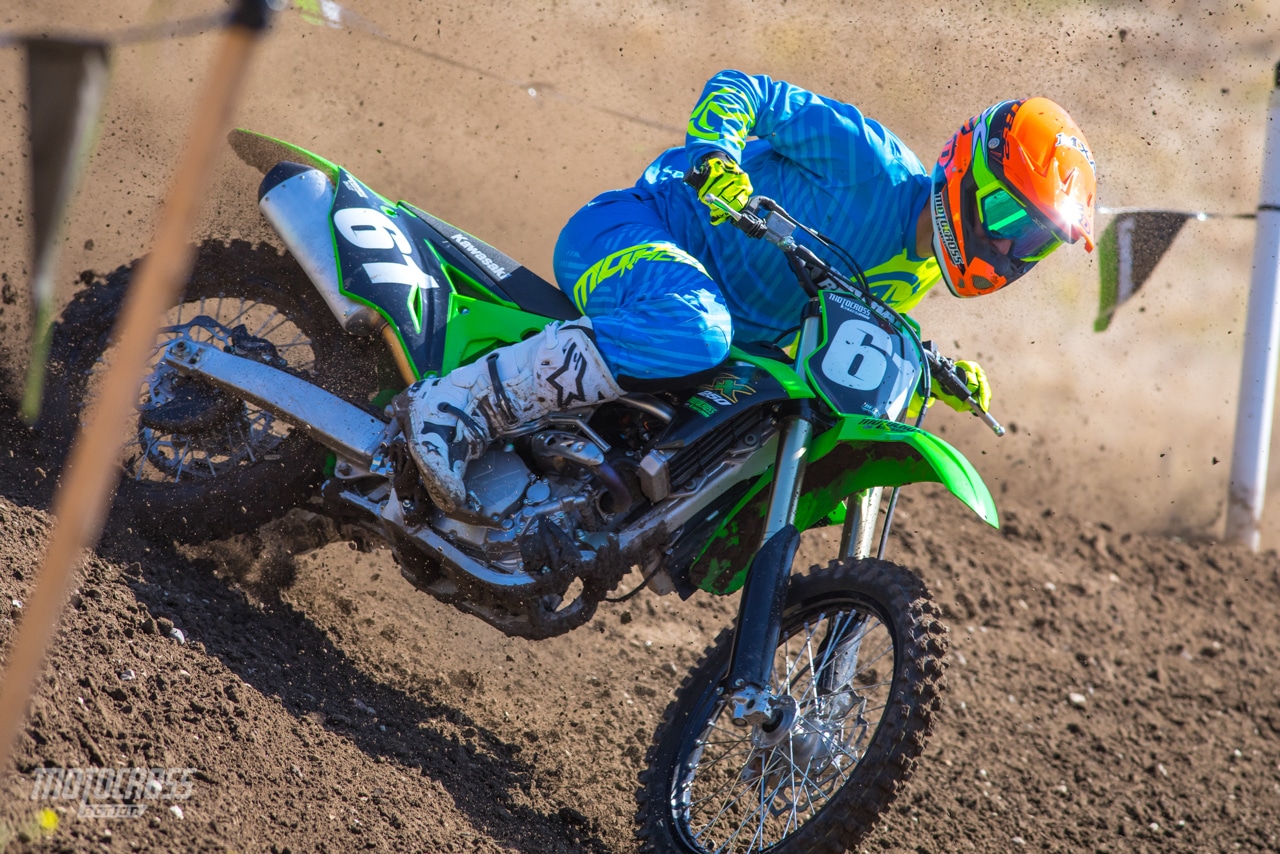
On the dyno, the 2020 KX250 power curve follows the 2020 CRF250 curve from the crack of the throttle to 7500 rpm, where the CRF250 starts to break away. The Honda beats the KX250 up to 11,700 rpm, where the Kawasaki takes off to make 43.26 horsepower at 12,800 rpm—1000 rpm sooner than the CRF250. The Kawasaki does rev to 14,000 rpm but is relatively flat for the final 1200 rpm. The real battleground for the KX250 versus CRF250 isn’t at peak; it is much lower on the curve where they stumble significantly coming up on the pipe. The battle is fought on the exit of turns, where neither the green nor red bike can hold a candle to the YZ250F, 250SXF, RM-Z250 or FC250 in the low-to-mid transition. Dynos don’t take into account throttle response, rev speed or acceleration rates—and although the 2020 Kawasaki KX250 lacks bottom-end power, it comes alive quicker than the CRF250—and for that reason it has a better powerband than the Honda. Every tester had good things to say about the KX250 engine, especially when comparing it to the 2019 powerplant.
All in all, the KX250 engine is impressive. It has a light throttle and revs through its powerband rapidly. Its lack of bottom-end power can be mitigated on the track by its instantaneous throttle response. This allows riders to make mistakes and recover with just a touch of the clutch. We do wish that the all-new high-rpm KX250 was outfitted with a gearbox that worked with the new power profile, because the rehashed 2019 gearbox has lengthy gaps between gears, especially second and third.
Kawasaki’s switch from Showa to Kayaba suspension components for 2020 was a bold move. They haven’t had much luck with the single-spring SFF forks over the last few years. With Yamaha’s success with Kayaba SSS forks, it seems like a smart move on Kawasaki’s part to switch. The hard part for Kawasaki’s engineers has always been getting the valving and spring rates correct. For 2020, the valving was very close, but 5.0 N/mm fork springs and a 54 N/mm shock spring don’t suit the average 135- to 165-pound 250 four-stroke rider. For comparison, Yamaha uses 4.7 N/mm fork springs while Honda uses an even lighter 4.6 N/mm spring rate. Most testers felt the forks were harsh in braking bumps. On smoother tracks with rolling whoops and big jumps, the stiff forks didn’t seem to bother test riders.
Overall, this is a vastly improved Kawasaki KX250. The high-horsepower, high-rpm engine and improved suspension make the KX250 into a fighter. Kawasaki’s budget wasn’t big enough to give the hard-to-start KX250 the electric starter, stronger clutch, softer spring rates, new plastic and improved cornering it needed to move up in the rankings.
MXA’S 2020 KAWASAKI KX250 FULL TEST
MXA’S 2020 KAWASAKI KX250 RACE TEST VIDEO
FOURTH PLACE: HONDA CRF250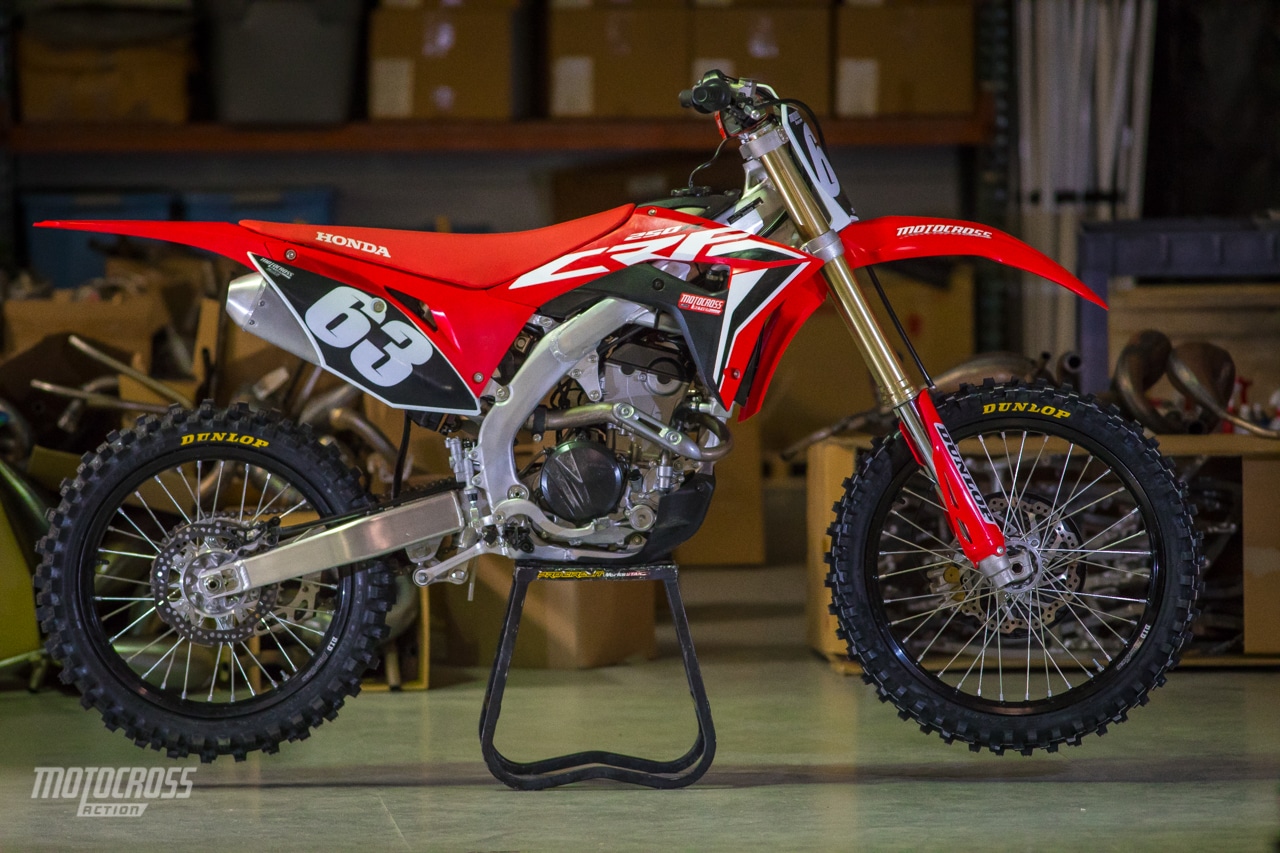
PEAK HORSEPOWER: 42.98 @ 13,800 rpm
PEAK TORQUE: 20.18 pound-feet
WEIGHT: 228 pounds

Honda changed its engine philosophy on the CRF250 back in 2018. It went from a low-to-mid powerband to a top-end-only engine. It was a letdown to say the least. It couldn’t get out of its own way on the exit of corners and, if it fell off the pipe, it took a frantic clutch hand to get it percolating again. Honda’s engineers knew early on that they had made a mistake with the 2018 engine, so they went back to the drawing boards for 2019 on the CRF250. They didn’t have the budget for an all-new CRF250 engine, so they did the best they could with what they had. They managed to gain almost 2 horsepower across the power spectrum. But, it didn’t help the CRF250 where it was at its weakest. It still had a total lack of usable low-to-mid power, which killed it on corner exit. For 2020, Honda engineers went back to the drawing boards once again. The new updates were designed to increase low-to-midrange power as well as enhance the top end. Honda succeeded. The 2020 CRF250 engine produces 1 to 2 more horsepower from 7500 rpm to 10,000 rpm, pulls harder on top, and revs out to 14,200 rpm. But success in motocross powerbands doesn’t come from dyno numbers; it comes in comparison to what the competition has to offer.

On the dyno, it is obvious that the CRF250 and KX250 give up significant power to the orange, white, blue and yellow pack from 6000 rpm to 8000 rpm. The problem for the Honda CRF250 is that you feel the lag off the bottom-end more prominently than on the equally weak KX250. The CRF250 is slow to get moving at the crack of the throttle. The clutch needs to be hammered to ensure the bike gets moving. Once the CRF250 is in motion, it spreads its wings and revs with the best of them. We like that you don’t have to shift this bike if you don’t want to; paradoxically, we don’t like that you can’t shift to get the most out of this engine until it cooperates. You could say that the CRF250 revs out further than any production 250 MXA has ever tested, but it takes too long to get there. It was hard for testers to reach peak horsepower at the end of a straight when they were barely moving at the beginning of the straight. This leaves power on the table—unused.
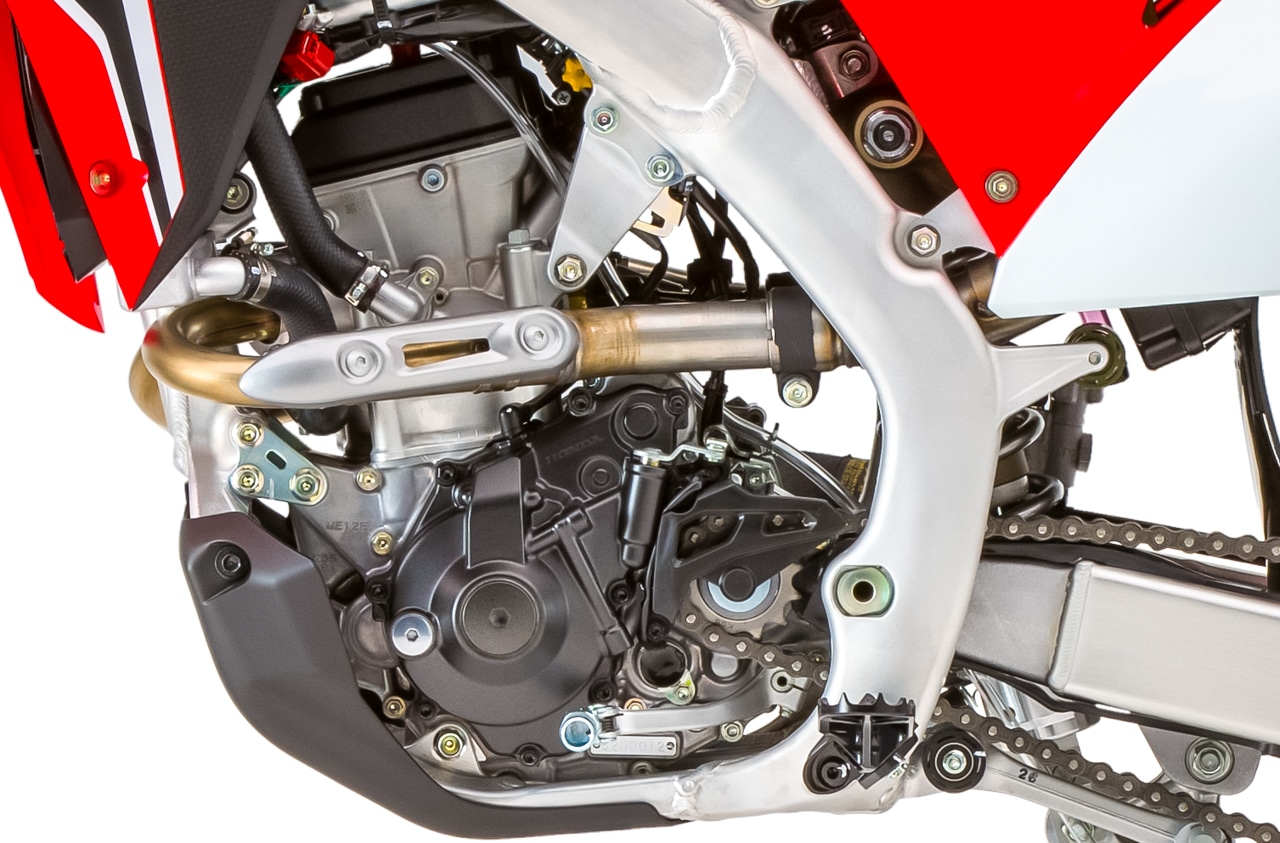
We have adored the rest of the CRF250 package since 2018. Although it is the heaviest bike in the class at 228 pounds, the chassis and suspension are awesome. We could say that the 2020 CRF250 would win this shootout if it had a KTM engine in its superb chassis, but it doesn’t, so forget that. For 2020, Honda updated the chassis by going with the same frame that was used on the CRF450 in 2019. Overall, the frame is more rigid. You feel how much stiffer the bike is as soon as you ride it through the pits; however, once on the track, that stiffness turns into improved stability and more accurate cornering. The Showa forks are first-rate. They are plush at the start of the stroke and get progressively stiffer at the end. They offer good bottoming resistance.
The 2020 Honda CRF250 offers great handling, suspension, ergonomics and controls; however, what matters most in the 250 class is the engine package—not necessarily the most peak horsepower, as the 2020 Yamaha YZ250F proves, but the best all-around powerband for the majority of 250 four-stroke racers. For the CRF250 to move up in the rankings, it needs a more usable powerband that works for more than just AMA Pros.
MXA’S 2020 HONDA CRF250 FULL TEST
MXA’S 2020 HONDA CRF250 RACE TEST VIDEO
THIRD PLACE: HUSQVARNA FC250
PEAK HORSEPOWER: 43.01 @ 13,800 rpm
PEAK TORQUE: 20.61 pound-feet
WEIGHT: 219 pounds

Finally, after six years, the Husqvarna FC250 has stepped out of the KTM’s shadow. Ever since KTM’s Stefan Pierer bought Husqvarna from BMW in 2013 and started platform sharing all the major components with KTM, the Husky has been a clone of the orange bike. It’s a given that it is not orange, has a unique molded plastic airbox/subframe and gets some peripheral parts from Magura, Pro Taper and D.I.D., but anything major is a KTM part. We have waited for over half a decade for Husqvarna to do something different, and this year it did. Even though Husqvarna and KTM have shared WP suspension components, also owned by Stefan Pierer, for the first time ever, the suspension settings are vastly different on the KTM and Husky motocross models. Husqvarna targeted the Vet, Novice, lighter and slower riders by going softer and suppler on its settings in comparison to KTM. You might think that this is a step in the wrong direction, but the majority of MXA test riders loved the plusher FC250 suspension over the stiffer KTM 250SXF settings. Only our Pro-level test riders preferred the 250SXF’s stiffer settings. The kicker? Husky knows that Pros don’t run stock suspension. Thus, Husky tried to select spring rates and valving that would make the riders who are Husqvarna’s core customers happy. We think this is a step in the right direction, even if it doesn’t satisfy fast riders.

What isn’t a step in the right direction is Husqvarna’s powerband. In 2019, we complained that the Husqvarna FC250 was suffocated by it closed-off airbox. The lack of air muted the FC250’s throttle response. There was a glimmer of hope for 2020 when an edict came down from the Austrian management to fix this flaw. KTM went all out and put 10 well-shaped vents in its airbox cover. The result was snappier throttle response. For some reason, Husqvarna’s engineers didn’t want to do it; however, since they were ordered to vent the airbox, they sandbagged the request by putting six small slots in the top edge of the airbox cover. Not only were the vents too small to make any difference, they were located in the wrong place to make more power. The result? The FC250 is still starving for air—odd, because air is free and plentiful. Husky’s contrary decision makes its very powerful engine rev slower than it should. Worse yet, there is a flat spot in the powerband that actually dips in power from 9500 rpm to 10,300 rpm. Surprisingly, it should be known that the 2020 FC250 runs better than the 2019 engine. It revs out faster and offers improved throttle response thanks to mapping changes—just not as much as it could have. It’s definitely not as snappy or responsive as its orange brother.
The FC250’s metered power makes it easy to ride and less aggressive than most high-rpm 250s, but it is harder to get this bike moving than the 250SXF and YZ250F—or even the RMZ250. The clutch lever needs to be flailed by your fingers when the bike exits corners to get it into its sweet spot. Then you have to resist shifting until 13,800 rpm to make up for what you lost in the first 50 feet out of the turn. If you shift before the rev limiter kicks in, you will be leaving significant power on the table. Given the fact that we think the Husqvarna suspension setup is better suited to the average 250 rider than the KTM ensemble and that Husqvarna and KTM share the same drivetrain, accoutrements and chassis, it is likely that Husqvarna could have won the 2020 MXA 250 Shootout if the engineers wouldn’t have been too pig-headed to allow more air in the engine. It’s not like Husqvarna didn’t know there was a problem—MXA has been complaining about this same issue since 2015.
The blame for not winning rests solely on the shoulders of the powers that be at Husqvarna. They killed the golden goose.
MXA’S 2020 HUSQVARNA FC250 FULL TEST
MXA’S 2020 HUSQVARA FC250 RACE TEST VIDEO
SECOND PLACE: YAMAHA YZ250F
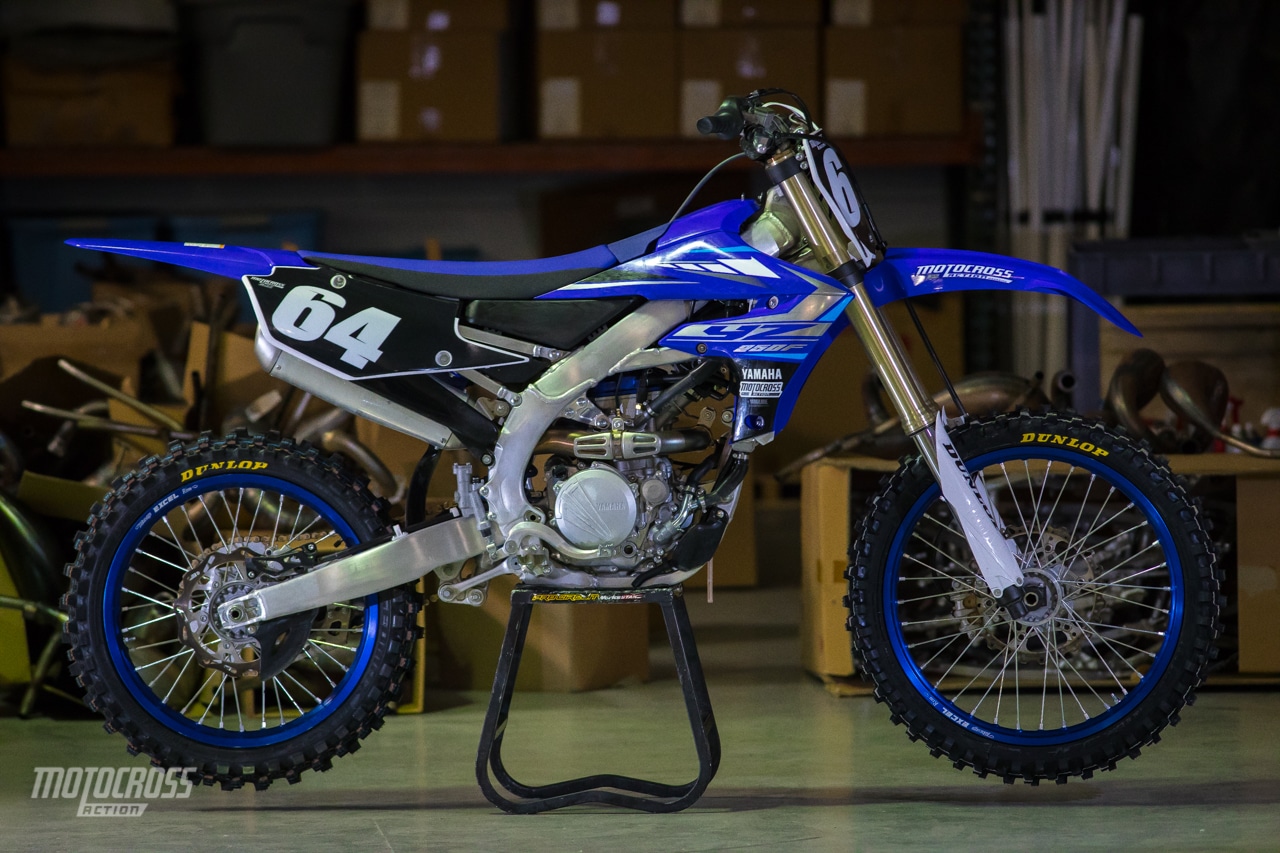
PEAK HORSEPOWER: 41.31 @ 12,100 RPM
PEAK TORQUE: 19.96 pound-feet
WEIGHT: 226 pounds

Last year the 2019 Yamaha YZ250F easily won MXA’s 250 Four-Stroke Shootout. And rightfully so, because it was the best all-around bike of 2019. Oh, it had some help: The KTM had airbox issues. The Honda suffered from a low-end drought. The Kawasaki was waiting for a new engine. The Suzuki’s suspension was stiff enough for an elephant, and the Husky took its time getting up to peak power. Make no mistake about it, the Yamaha YZ250F romped the competition in 2019. It was a glorious victory for Yamaha and something it should be proud of. And Yamaha was proud of the 2019 Yamaha YZ250F—so proud that it elected to let it rest on its laurels for 2020. Good idea in roulette, but too big a gamble in motocross bikes.
Resting on its laurels means that the 2020 YZ250F is unchanged from the 2019 YZ250F (save for a rubber grommet inside the air filter). Now, 12 months later, the landscape of the 250 four-stroke class has changed significantly. While Yamaha was basking in the glow of its 2019 victory, KTM, Husqvarna, Kawasaki and Honda decided to change the playing field. What once was a class dominated by midrange powerbands suddenly turned into a high-stakes, high-rpm, all-or-nothing gamble to make the most power at the highest possible rpm. Meaning, in 2020, the Yamaha YZ250F and Suzuki RM-Z250 are the only low-to-mid engines in a field that includes four 14,000-rpm revvers.
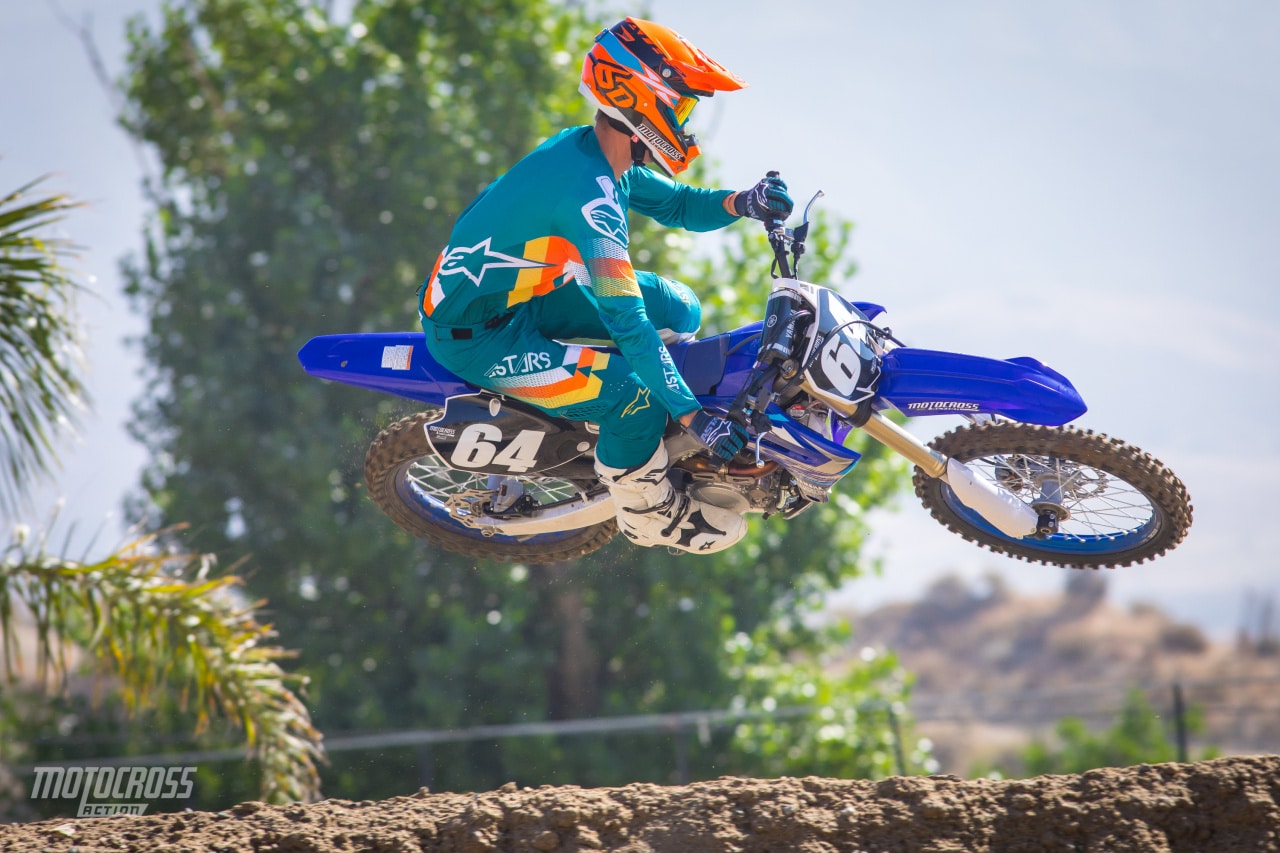
Being caught out isn’t the end of the world for the YZ250F, because with its midrange power placement, the YZ250F gets up and goes quicker than any other 250 four-stroke. No need to feather the clutch out of corners. No need to wait for the rpm to build before shifting to the next gear. No need to rev the engine until glass breaks in the scoring tower windows. The 2020 Yamaha YZ250F, which is the 2019 YZ250F, gets to the meat of its powerband quickly and easily. Because of its unique powerband, the YZ250F feels more powerful than it actually is. On the dyno, it has less than average horsepower, only beating the lowly RM-Z250 on peak horsepower. Even where its power is at its best (low-to-mid), it is matched by the high-rpm Husky and KTM. And after the engine reaches 9000 rpm, the YZ250F only makes more power than the RM-Z250. We know that these facts don’t sound all that rosy for the 2020 YZ250F, but dynos don’t go to the starting line, and peak power is not as important as power placement, throttle response and acceleration rates. Make no mistake about it, the YZ250F is better than the sum of its numbers.
On the track, every MXA test rider loved the power delivery; however, every rider wanted more top end power and longer intervals between shift points. Yamaha taking a year off to bask in the glory of its 2019 dominance was a faux pas, but it wasn’t the kiss of death. The MXA test riders ranked the 2020 Yamaha YZ250F second overall in the 2020 MXA 250 Shootout because it is different from the red, green, white and orange bikes. It’s got hit. It bursts out of corners, and it is the best all-around bike for a Novice racer, because, unlike the free-revvers, it isn’t a Pro-focused bike.
Even though the bike feels much wider than the rest of the bikes, its width issue is offset by its superb Kayaba SSS suspension. It might not turn as sharply as the KTM, Husqvarna, Suzuki or Honda, but it requires very little input in the corners. The MXA test riders loved the YZ250F, but, to be as clear and precise as possible, the 2020 Yamaha YZ250F couldn’t win this shootout because the current 250cc environment is not the same as it was in 2019.
MXA’S 2020 YAMAHA YZ250F FULL TEST
MXA’S 2020 YAMAHA YZ250F RACE TEST VIDEO
FIRST PLACE: KTM 250SXF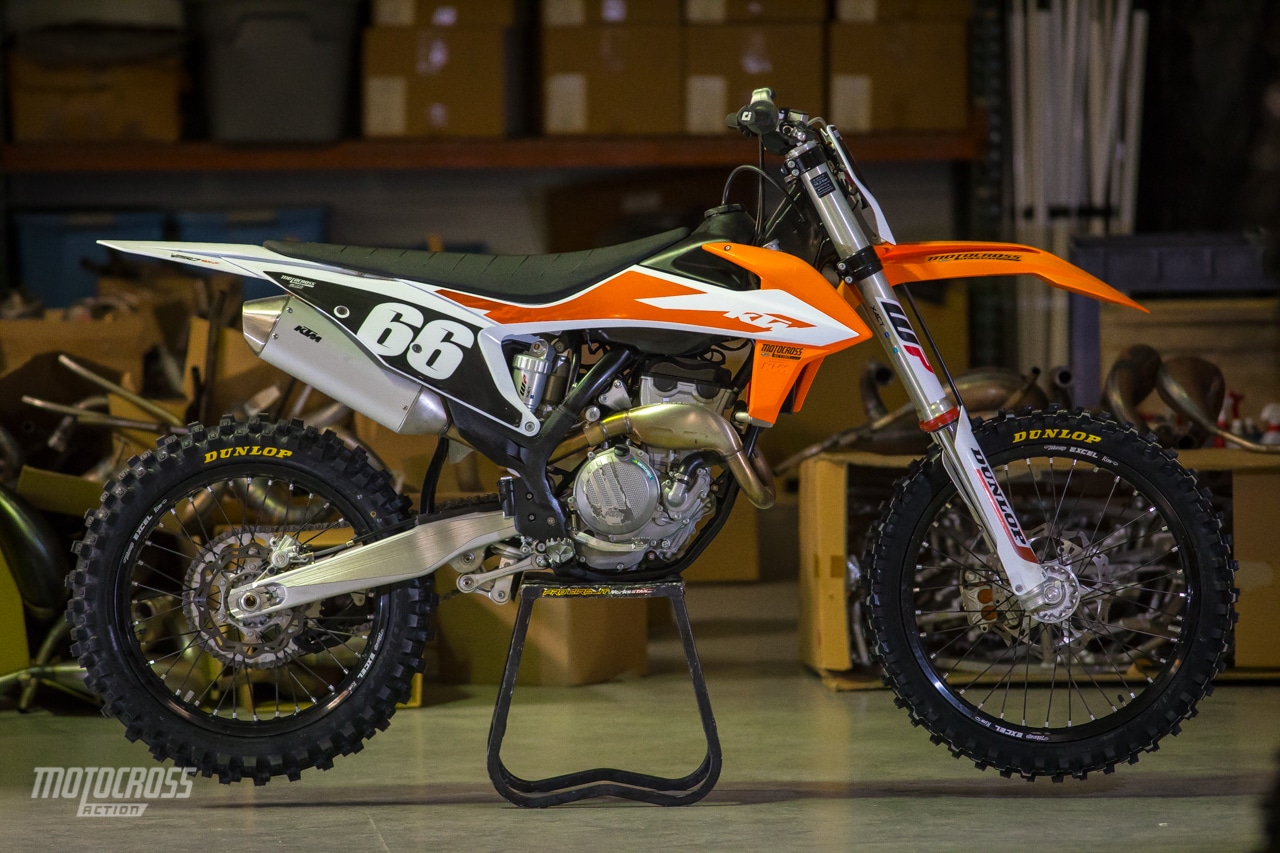
PEAK HORSEPOWER: 43.22 @ 13,600 rpm
PEAK TORQUE: 20.50 pound-feet
WEIGHT: 218 pounds
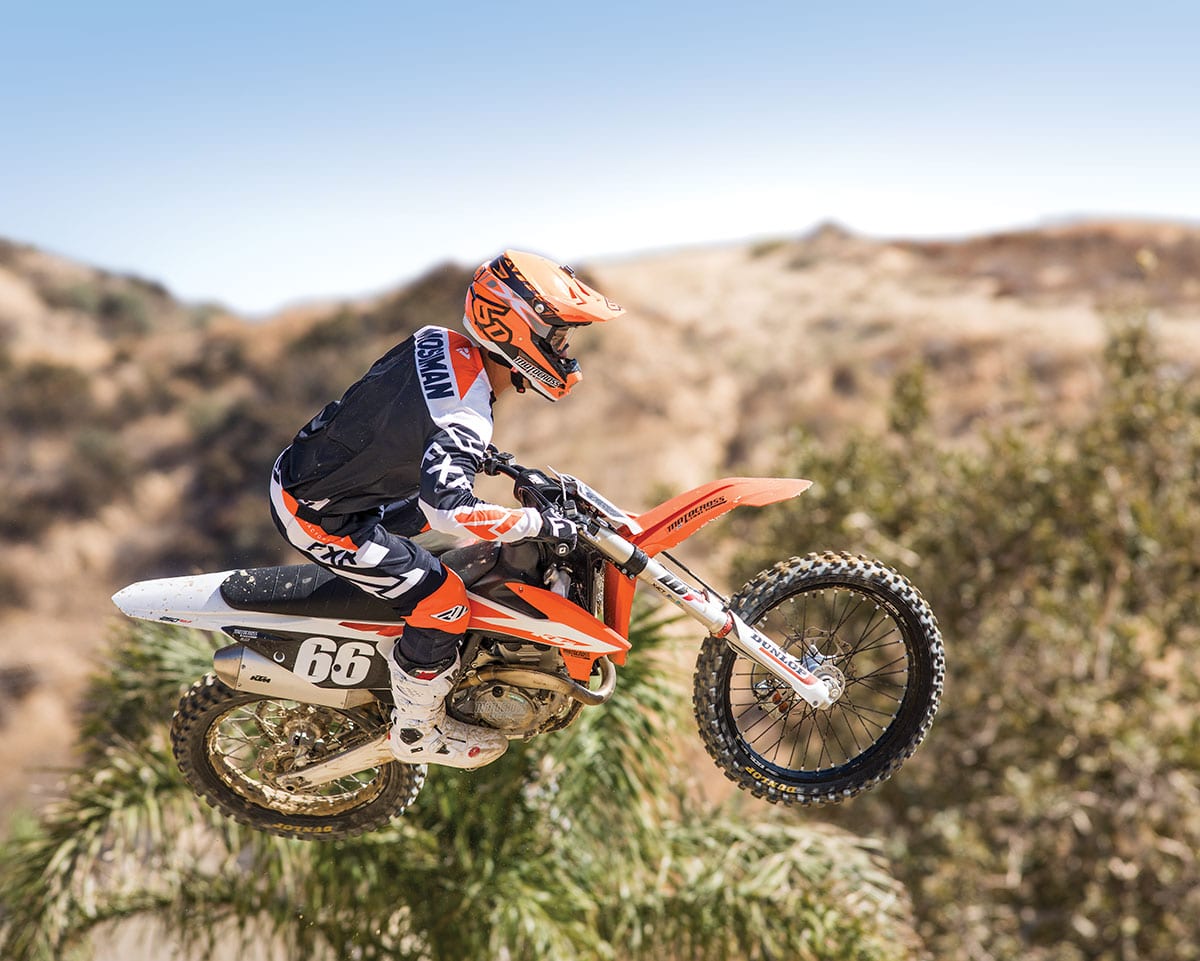 Yeah, yeah, yeah. You hate KTM. You want any other brand to win—even if it’s a KTM-built Husqvarna. You are a loyal Honda owner. You believe air forks are a waste of air. You are positive that weight doesn’t matter. You know that MXA has it out for Suzuki. You personally know a guy who knows a guy who knows that shootouts are won by the biggest advertiser. And, you truly believe that Motocross Action should be called KTM Action. What we know is that the 2020 KTM 250SXF is the best all-around race bike on the market. It offers great power across the board, revs to the moon and has solid midrange numbers. In 2019, the KTM 250SXF lost MXA’s shootout due to its closed-off airbox, muted mapping and stiff chassis. It had enough low-to-mid horsepower to be competitive, but it was slow to get moving out of corners while the 2019 YZ250F was perky and alert.
Yeah, yeah, yeah. You hate KTM. You want any other brand to win—even if it’s a KTM-built Husqvarna. You are a loyal Honda owner. You believe air forks are a waste of air. You are positive that weight doesn’t matter. You know that MXA has it out for Suzuki. You personally know a guy who knows a guy who knows that shootouts are won by the biggest advertiser. And, you truly believe that Motocross Action should be called KTM Action. What we know is that the 2020 KTM 250SXF is the best all-around race bike on the market. It offers great power across the board, revs to the moon and has solid midrange numbers. In 2019, the KTM 250SXF lost MXA’s shootout due to its closed-off airbox, muted mapping and stiff chassis. It had enough low-to-mid horsepower to be competitive, but it was slow to get moving out of corners while the 2019 YZ250F was perky and alert.
For 2020, KTM made small changes to the 250SXF. The suspension has been made plusher to get rid of the harshness that last year’s more rigid chassis brought to the table. A vented airbox cover was added to the equation to flow more air into the previously starved engine. We also believe, after racing the 2020 and 2019 KTM 250SXFs back to back (with both the closed-off and vented airbox) that the powerband is greatly improved for 2020. The 2020 engine feels more spry off the bottom and revs through its powerband quicker than before.
In this new era of high-rpm 250cc four-stroke engines, where 14,000 rpm is the price of entry and losing low-to-mid power is the penalty, the 2020 KTM 250SXF produces the exact same low-to-mid horsepower as the Yamaha YZ250F, while gapping the YZ250 from 9000 rpm on up. It is a rev monster with the midrange of a torquer. You might not feel how much power the KTM 250SXF has from low to mid because it is tuned to run at 14,000 rpm—but it’s there. When you add in the lightest weight, bulletproof hydraulic clutch, ingenious air filter, slim ergos, awesome Brembo brakes, electronics suite and electric starting, you ice the cake.
When it comes to handling, we think that KTM’s chromoly steel chassis is the best all-around-handling bike on the track. Yes, there are bikes that turn sharper, but they stand up mid-corner, head shake at speed or get loose on corner exit. The KTM chassis requires the least steering input of any 250 made. It isn’t all flash in one aspect of handling; it works well in every possible scenario.
The updated and more responsive XACT air forks, vented airbox cover, new mapping and do-it-all powerband offer something for riders of all skill levels. This isn’t the high-rpm KTM of five years ago—that is where Kawasaki and Honda are at with their powerbands—this is the only all-encompassing, low-to-top, Novice-to-Pro engine that can run with the YZ250F down low and KX250 and CRF250 on top. It is the king of 250 four-strokes for 2020 and the 2020 MXA 250 Four-Stroke Shootout winner.
MXA’S 2020 KTM 250SXF FULL TEST
MXA’S 2020 KTM 250SXF RACE TEST VIDEO
MXA’S 2020 FOUR-STROKE SHOOTOUT FULL VIDEO






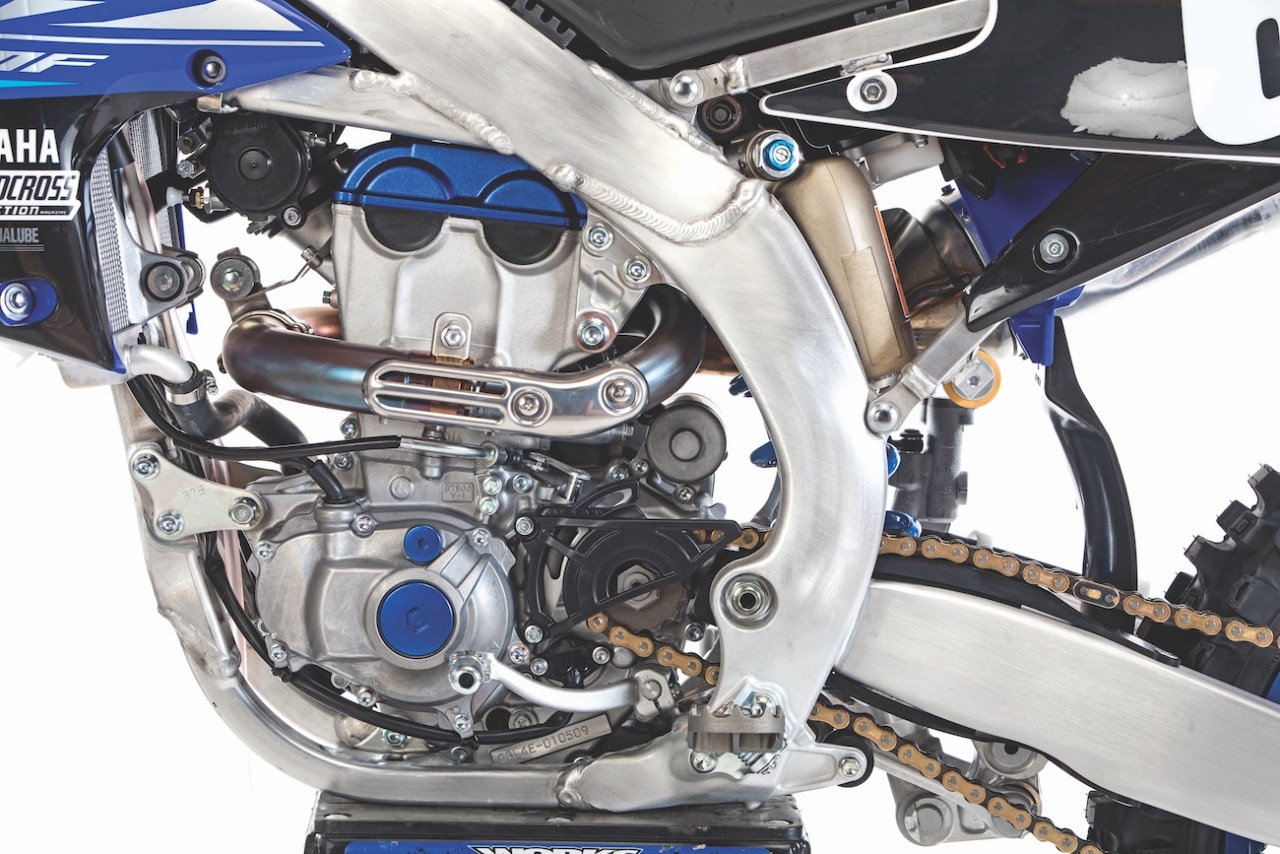
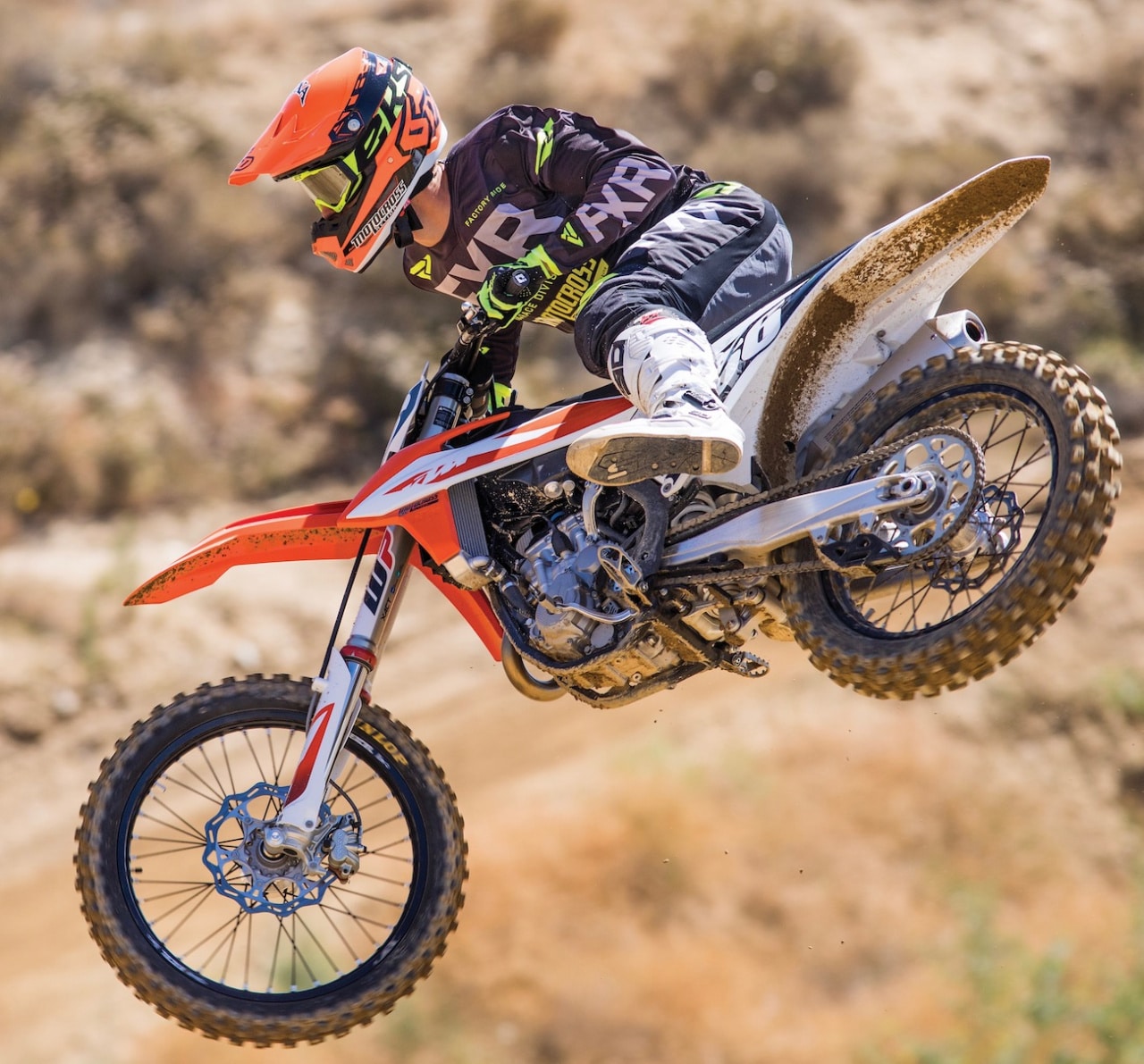
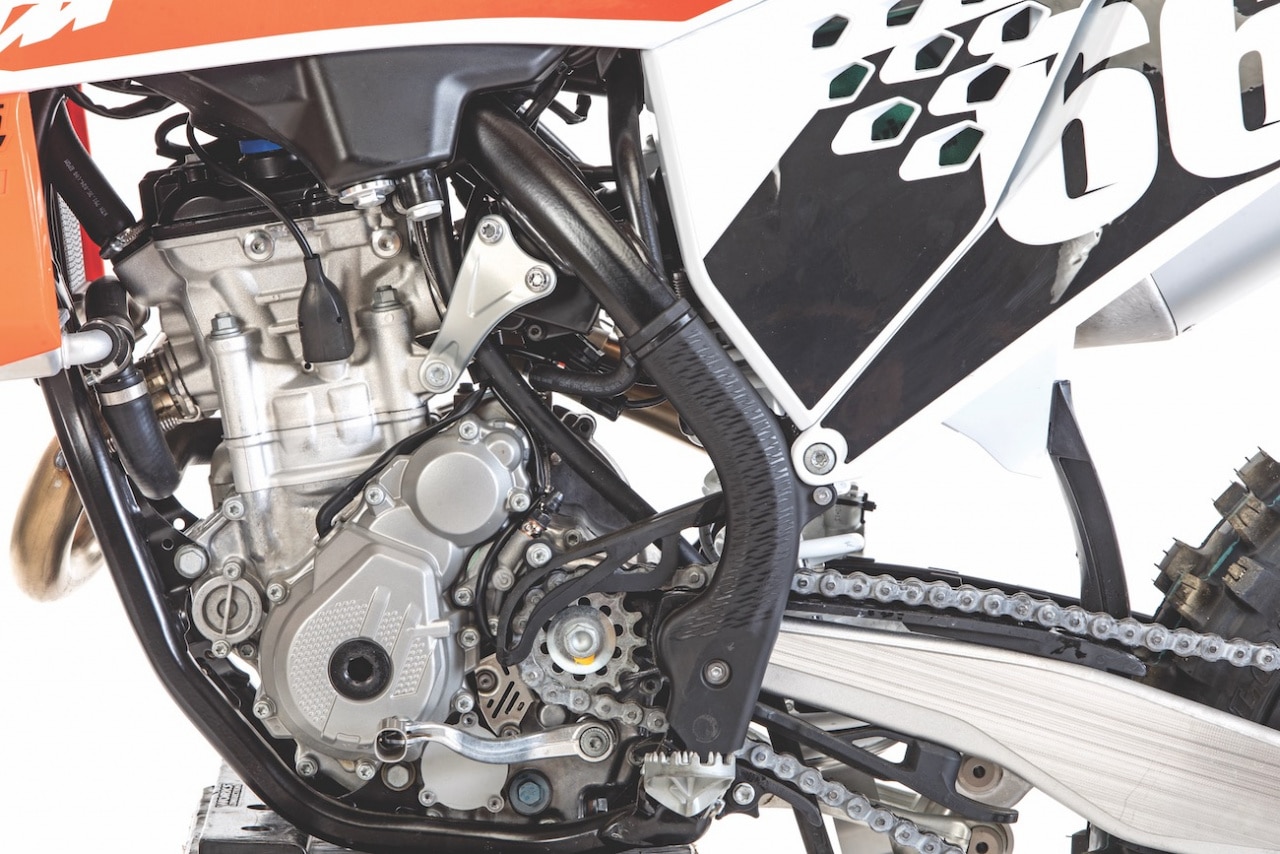


Comments are closed.